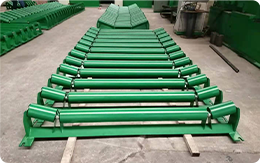 Afrikaans
Afrikaans  Albanian
Albanian  Amharic
Amharic  Arabic
Arabic  Armenian
Armenian  Azerbaijani
Azerbaijani  Basque
Basque  Belarusian
Belarusian  Bengali
Bengali  Bosnian
Bosnian  Bulgarian
Bulgarian  Catalan
Catalan  Cebuano
Cebuano  Corsican
Corsican  Croatian
Croatian  Czech
Czech  Danish
Danish  Dutch
Dutch  English
English  Esperanto
Esperanto  Estonian
Estonian  Finnish
Finnish  French
French  Frisian
Frisian  Galician
Galician  Georgian
Georgian  German
German  Greek
Greek  Gujarati
Gujarati  Haitian Creole
Haitian Creole  hausa
hausa  hawaiian
hawaiian  Hebrew
Hebrew  Hindi
Hindi  Miao
Miao  Hungarian
Hungarian  Icelandic
Icelandic  igbo
igbo  Indonesian
Indonesian  irish
irish  Italian
Italian  Japanese
Japanese  Javanese
Javanese  Kannada
Kannada  kazakh
kazakh  Khmer
Khmer  Rwandese
Rwandese  Korean
Korean  Kurdish
Kurdish  Kyrgyz
Kyrgyz  Lao
Lao  Latin
Latin  Latvian
Latvian  Lithuanian
Lithuanian  Luxembourgish
Luxembourgish  Macedonian
Macedonian  Malgashi
Malgashi  Malay
Malay  Malayalam
Malayalam  Maltese
Maltese  Maori
Maori  Marathi
Marathi  Mongolian
Mongolian  Myanmar
Myanmar  Nepali
Nepali  Norwegian
Norwegian  Norwegian
Norwegian  Occitan
Occitan  Pashto
Pashto  Persian
Persian  Polish
Polish  Portuguese
Portuguese  Punjabi
Punjabi  Romanian
Romanian  Russian
Russian  Samoan
Samoan  Scottish Gaelic
Scottish Gaelic  Serbian
Serbian  Sesotho
Sesotho  Shona
Shona  Sindhi
Sindhi  Sinhala
Sinhala  Slovak
Slovak  Slovenian
Slovenian  Somali
Somali  Spanish
Spanish  Sundanese
Sundanese  Swahili
Swahili  Swedish
Swedish  Tagalog
Tagalog  Tajik
Tajik  Tamil
Tamil  Tatar
Tatar  Telugu
Telugu  Thai
Thai  Turkish
Turkish  Turkmen
Turkmen  Ukrainian
Ukrainian  Urdu
Urdu  Uighur
Uighur  Uzbek
Uzbek  Vietnamese
Vietnamese  Welsh
Welsh  Bantu
Bantu  Yiddish
Yiddish  Yoruba
Yoruba  Zulu
Zulu main parts of belt conveyor
Main Parts of Belt Conveyor
Belt conveyors are an essential component in various industries, ranging from manufacturing to mining and distribution. Known for their efficiency and reliability, these conveyors facilitate the smooth transportation of materials over considerable distances. Understanding the main parts of a belt conveyor is crucial for anyone involved in its operation, maintenance, or design.
1. Belt
The belt is the most essential part of the conveyor system, acting as the medium for transporting materials. Typically made from materials such as rubber, fabric, or a combination of both, the belt must have a sufficient grip to ensure that the transported items do not slip. The type of belt used often depends on the nature of the materials being transported, the environmental conditions, and the required strength. For heavy loads, reinforced belts are utilized to withstand greater wear and tear.
The pulley system consists of a series of drums that play a vital role in moving the belt. There are two main types of pulleys drive pulleys and idler pulleys. The drive pulley, located at the conveyor's discharge end, is driven by a motor and provides the necessary force to move the belt. The idler pulleys are installed along the length of the conveyor to support the belt and maintain its tension. Proper alignment and maintenance of the pulley system are crucial to prevent belt misalignment and to ensure smooth operation.
3. Frame
The frame provides the structural integrity of the conveyor. It supports the belt, pulleys, and other components. Typically made from steel or aluminum, the frame is designed to bear the weight of the materials being transported as well as the conveyor system itself. The frame can be custom-designed to accommodate different conveyor lengths and configurations, allowing for flexibility in various industrial settings.
main parts of belt conveyor

4. Tensioning System
The tensioning system is responsible for maintaining the required tension in the belt. Adequate tension is essential to prevent slippage and ensure proper functioning. There are several types of tensioning mechanisms, including screw-type tensioners, which involve adjusting the position of the idler pulley to increase or decrease belt tension. Automatic tensioners are also popular, as they continuously adjust the tension based on the belt's condition, reducing the need for manual adjustments.
5. Conveyor Control System
An efficient conveyor control system manages the operation of the belt conveyor. This system may include sensors, motors, and adjustable speed controls, allowing for smooth start and stop operations. Automation can enhance efficiency by synchronizing the conveyor with other machinery in a production line, ensuring that items are transported precisely when needed. Modern conveyor systems can be integrated with programmable logic controllers (PLCs) for sophisticated control and monitoring capabilities.
6. Safety Devices
Safety is paramount in any industrial environment, and belt conveyors are equipped with several safety devices to prevent accidents. These may include emergency stop buttons, belt misalignment switches, and guards to protect personnel from moving parts. Regular maintenance and inspection of these safety devices are critical to ensuring they function correctly.
Conclusion
Understanding the main parts of a belt conveyor is essential for those involved in its operation and maintenance. Each component plays a specific role in ensuring the effective transportation of materials, contributing to the overall efficiency of industrial processes. Whether you are designing a new conveyor system or maintaining an existing one, having a comprehensive knowledge of these parts will enhance operational reliability and safety. With advancements in technology, the design and functionality of belt conveyors continue to evolve, making them even more integral to modern industry.
-
Revolutionizing Conveyor Reliability with Advanced Rubber Lagging PulleysNewsJul.22,2025
-
Powering Precision and Durability with Expert Manufacturers of Conveyor ComponentsNewsJul.22,2025
-
Optimizing Conveyor Systems with Advanced Conveyor AccessoriesNewsJul.22,2025
-
Maximize Conveyor Efficiency with Quality Conveyor Idler PulleysNewsJul.22,2025
-
Future-Proof Your Conveyor System with High-Performance Polyurethane RollerNewsJul.22,2025
-
Driving Efficiency Forward with Quality Idlers and RollersNewsJul.22,2025





























